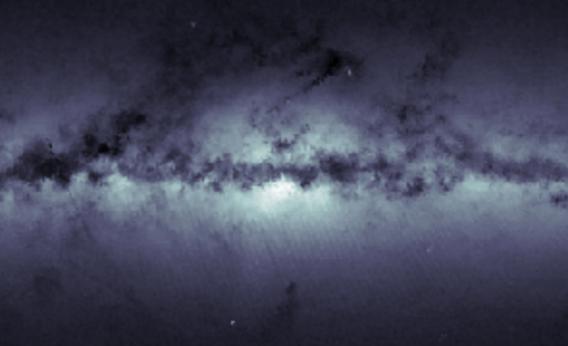Create a free profile to get unlimited access to exclusive videos, sweepstakes, and more!
Map of the Stars’ Homes

Gaia is a European Space Agency satellite, a flying saucer–shaped observatory designed to measure the positions and velocities of stars with incredible precision. The idea is to build up a 3-D map of a billion stars.
Yes. A billion.
It does this by continuously sweeping the sky, taking supremely precise data for each star that enters its field of view. Over its five year mission, it will seek out and explore, taking about 40 million observations every day!
It also takes a lot of “housekeeping” data, routine measurements used to understand what the spacecraft itself is doing. Since it spins, stars moves across its field of view. It measures their speed, so that engineers back on Earth can keep track of the rate of spacecraft spin and its orientation.
By simply counting the number of stars moving across its vision, and knowing their positions in the sky, a picture of the sky can be made … but not using images of the stars themselves, but the numbers from the data of how densely they’re dotting the sky. Behold:
That is not really an image so much as a map: It shows where stars are in the sky. It’s displayed in such a way that the Milky Way—our home galaxy, a flat disk with a central bulge—goes straight across the center. We’re inside the disk, so we see it as a thick line flowing across the sky, called the Galactic Plane. When we look toward the galactic center there are more stars (my favorite analogy is that it’s like living in the suburbs of a big city, and looking toward downtown where there are more lights), and you can see brighter patches there.
Strewn across all this are dark filaments, ribbons of places where we see fewer stars. Those are regions blocked by clouds of opaque interstellar dust. This junk is composed of lots of different things like complex organic molecules, silicates, molecular hydrogen … it litters the galaxy like polluted streams, ejecta from when stars are born and when they die.
Hmph. Perhaps that analogy is a little unfair; dust is lovely and a natural byproduct of the lives of stars, and it adds a degree of delicacy to the Gaia map.
And oh, those two blobs to the lower right? Those are the Small and Large Magellanic Clouds, smaller satellite galaxies to our own. You can also see a dozen or so small, fuzzy blips around the image; those are globular clusters, which are tightly packed balls of hundreds of thousands of stars, orbiting the galaxy like bees around a hive.
Remember, what you’re seeing is not actually a picture, but a map made using just numbers of stars counted by the detectors on Gaia! And it wasn’t really designed to do this sort of thing; like dust from stars, it’s just a byproduct of the mission.
And just like dust, a lovely one.


























